#eicrtest
Explore tagged Tumblr posts
Text
Risk Assessment Guide for PAT Testing: Keep It Safe, Keep It Simple
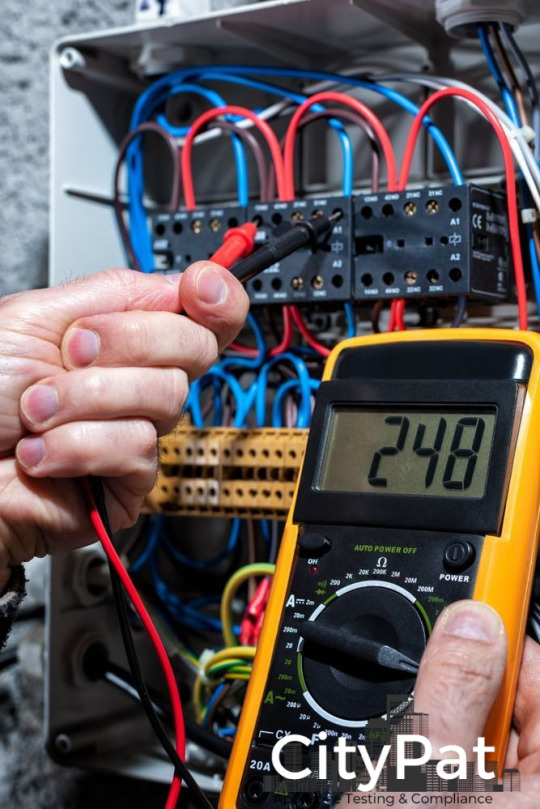
Ever tried boiling a kettle and it gave you a zap back? Not fun. That’s where PAT testing — also known as portable appliance testing — becomes a lifesaver.
Whether it’s an office kettle or a workshop drill, knowing when and how to conduct a PAT safety test is key to preventing accidents. But before any tests happen, there’s one crucial step: risk assessment
Why Risk Assessment is a Big Deal in PAT Testing
At CityPAT, we don’t just show up with a PAT tester and start zapping plugs. We begin with a risk assessment to identify:
Which electrical appliances need testing
How often PAT testing is required
What level of portable appliance inspection is necessary
Skipping this step is like walking in blindfolded. From fixed electrical appliance testing to routine office PAT testing, risk assessments help us tailor the process to your needs — safely and efficiently.
Understanding the Risks
No two places are the same. A high-traffic café has different risks than a small accountant’s office. That’s why we assess:
The environment — is it dusty, wet, or cluttered?
The equipment — are you using laptops or power saws?
The frequency — how often are appliances used?
This ensures your portable appliance safety services actually improve… well, safety.
PAT Checks Done Right
We cover everything from electrical portable appliance testing PAT to PAT testing fixed appliances, ensuring all your equipment, whether portable or semi-permanent, gets the right check. Our PAT checks are backed by years of expertise and certified procedures.
Need portable electrical testing for a site office? Or electrical safety PAT testing for a school? We handle it all — quickly, properly, and with a smile.
Your Legal and Safety Responsibilities
In most workplaces, PAT testing is required by insurance companies and health & safety regulators. That means whether you’re managing a business, property, or public space, you’ve got a duty to perform electrical appliance testing regularly.
Think of it this way: you’re not just avoiding fines. You’re protecting people — from employees to customers.
What We Offer
CityPAT is your go-to for:
PAT health and safety assessments
Regular PAT test electrical appliances services
Comprehensive electrical portable appliance testing
Reliable support for portable appliance safety
Efficient testing of all PAT appliances — big or small
Our expert team makes portable appliance safety services stress-free, offering everything from full reports to compliance certificates.
Your Next Move: Be Safe, Not Sorry. Avoid accidents and stay compliant with top-notch PAT electrical testing from citypat. We make health and safety PAT testing simple and affordable.
👉 Book your PAT test today — or call for expert advice from your friendly local pros.
0 notes
Text
Everything You Need to Know About EICR

A EICR testing report is essential for ensuring that all electrical systems at a property are in good operating order. https://bit.ly/3X41fPy
2 notes
·
View notes
Text
Risk Assessment Guide for PAT Testing: Keep It Safe, Keep It Simple
Ever tried boiling a kettle and it gave you a zap back? Not fun. That’s where PAT testing — also known as portable appliance testing — becomes a lifesaver.
Whether it’s an office kettle or a workshop drill, knowing when and how to conduct a PAT safety test is key to preventing accidents. But before any tests happen, there’s one crucial step: risk assessment

Why Risk Assessment is a Big Deal in PAT Testing
At CityPAT, we don’t just show up with a PAT tester and start zapping plugs. We begin with a risk assessment to identify:
Which electrical appliances need testing
How often PAT testing is required
What level of portable appliance inspection is necessary
Skipping this step is like walking in blindfolded. From fixed electrical appliance testing to routine office PAT testing, risk assessments help us tailor the process to your needs — safely and efficiently.
Understanding the Risks
No two places are the same. A high-traffic café has different risks than a small accountant’s office. That’s why we assess:
The environment — is it dusty, wet, or cluttered?
The equipment — are you using laptops or power saws?
The frequency — how often are appliances used?
This ensures your portable appliance safety services actually improve… well, safety.
PAT Checks Done Right
We cover everything from electrical portable appliance testing PAT to PAT testing fixed appliances, ensuring all your equipment, whether portable or semi-permanent, gets the right check. Our PAT checks are backed by years of expertise and certified procedures.
Need portable electrical testing for a site office? Or electrical safety PAT testing for a school? We handle it all — quickly, properly, and with a smile.
Your Legal and Safety Responsibilities
In most workplaces, PAT testing is required by insurance companies and health & safety regulators. That means whether you’re managing a business, property, or public space, you’ve got a duty to perform electrical appliance testing regularly.
Think of it this way: you’re not just avoiding fines. You’re protecting people — from employees to customers.
What We Offer
CityPAT is your go-to for:
PAT health and safety assessments
Regular PAT test electrical appliances services
Comprehensive electrical portable appliance testing
Reliable support for portable appliance safety
Efficient testing of all PAT appliances — big or small
Our expert team makes portable appliance safety services stress-free, offering everything from full reports to compliance certificates.
Your Next Move: Be Safe, Not Sorry. Avoid accidents and stay compliant with top-notch PAT electrical testing from citypat. We make health and safety PAT testing simple and affordable.
👉 Book your PAT test today — or call for expert advice from your friendly local pros.
0 notes
Text
EICR Test Procedure Explained: A Complete Guide for Property Owners in the UK
When it comes to electrical safety in homes and businesses, the Electrical Installation Condition Report (EICR) plays a crucial role. Whether you're a landlord, a homeowner, or a business owner, understanding the EICR test procedure is essential to remain compliant with UK regulations and to ensure the safety of your property’s electrical systems.
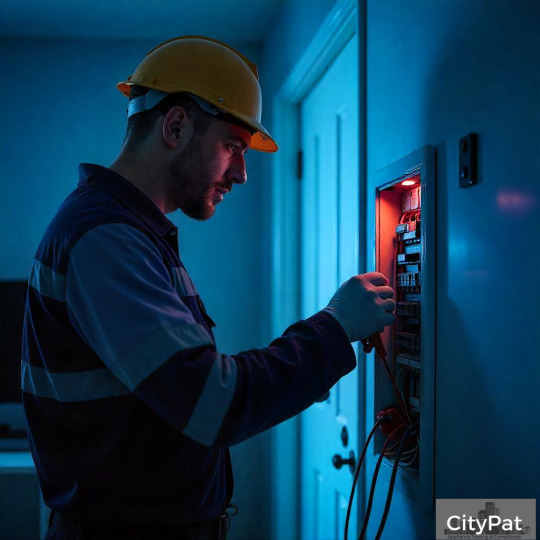
In this comprehensive guide, we break down the EICR test procedure step-by-step, explain its significance, and outline what you can expect during an inspection.
What is an EICR?
An Electrical Installation Condition Report (EICR) is a formal document produced following an assessment of the electrical systems within a property. This inspection is carried out by a qualified electrician or an approved contractor to determine whether the electrical installations are safe, properly maintained, and compliant with current standards.
Why is an EICR Important?
Legal Requirement for Landlords As of July 1, 2020, it’s a legal requirement in England for landlords to have their rental properties inspected every five years or at the beginning of a new tenancy. Failing to comply can lead to heavy penalties.
Prevention of Electrical Hazards Regular EICR tests help detect faults that could lead to electric shocks, fires, or other dangerous situations.
Insurance Compliance Some insurance providers require an up-to-date EICR as a condition of coverage, especially for commercial properties.
Peace of Mind Whether it's your home or business, an EICR gives you confidence in the safety and reliability of your electrical systems.
EICR Test Procedure: Step-by-Step
Here’s a clear breakdown of the EICR test procedure carried out by certified electricians:
1. Initial Visual Inspection
The process begins with a thorough visual inspection of the electrical installations, including:
Consumer units (fuse boxes)
Sockets and switches
Wiring condition
Evidence of overheating or damage
Signs of previous DIY electrical work
This helps the electrician identify any obvious issues before moving on to more technical testing.
2. Dead Testing
The next stage involves "dead testing" – tests carried out when the electrical system is turned off. These include:
Continuity Testing: Ensures all conductors are properly connected and intact.
Insulation Resistance Testing: Verifies that the insulation around the cables is intact and prevents current from leaking.
Polarity Check: Confirms that wires are connected to the correct terminals.
These tests help determine the integrity and safety of the fixed wiring without any electrical flow.
3. Live Testing
Once dead tests are complete, live testing is conducted. These tests are done with the power on, under controlled conditions:
Earth Fault Loop Impedance Test: Measures how quickly the system disconnects in the event of a fault.
RCD Testing (Residual Current Devices): Ensures that RCDs operate within required disconnection times, which is crucial in preventing electric shocks.
Live tests must only be performed by qualified and experienced professionals due to the risks involved.
4. Functional Testing
The electrician will then check the operation of various components to make sure everything functions as intended:
Lights
Switches
Socket outlets
Smoke detectors (if integrated with the electrical system)
Any anomalies will be noted and addressed in the final report.
5. Documentation and Report
After the inspection, the electrician will compile all findings into an EICR document. The report categorises issues as follows:
C1 (Danger Present) – Immediate action required.
C2 (Potentially Dangerous) – Urgent remedial work required.
C3 (Improvement Recommended) – Not dangerous but could enhance safety.
FI (Further Investigation Required) – Unclear issue, further testing needed.
If C1 or C2 issues are found, the property fails the test, and remedial work is required to pass.
What Happens If You Fail an EICR Test?
If your property fails the EICR test, you’ll need to carry out the necessary remedial work as soon as possible. Once completed, a satisfactory certificate or a follow-up report will be issued to confirm that the electrical system meets safety standards.
For landlords, this is a legal requirement, and failure to act promptly can result in fines of up to £30,000.
How Often Should You Get an EICR?
The recommended frequency of an EICR test depends on the type of property:
Rental Properties: Every 5 years or with each new tenancy
Owner-Occupied Homes: Every 10 years
Commercial Premises: Every 5 years
Industrial Sites: Every 3 years
Public Buildings (e.g. schools): Every 5 years or as specified
How to Prepare for an EICR Inspection
Before the inspection, make sure:
Access is available to all areas (especially fuse boxes and sockets)
Devices and appliances are unplugged if requested
Pets or occupants are safely out of the way
Hiring a reputable company like City PAT UK ensures a professional, certified approach with minimal disruption.
Why Choose City PAT UK for EICR Testing?
At City PAT UK, we specialise in electrical testing and certification services for homes, landlords, and businesses. Our qualified electricians follow the latest safety guidelines and use advanced testing equipment to deliver thorough and reliable EICRs.
We offer:
Affordable pricing
Prompt appointment scheduling
Detailed reports
Remedial services if needed
Final Thoughts
Understanding the EICR test procedure is vital for anyone responsible for a property. It not only ensures safety and legal compliance but also protects you from costly repairs or potential accidents.
If you're due for an inspection or unsure about the state of your electrical systems, don’t wait—schedule your EICR test with City PAT UK today.
Call us : 01423 534 666 Email : [email protected] Website : https://citypat.co.uk/
0 notes
Text
Understanding the EICR Test Procedure: A Complete Guide for UK Property Owners
Introduction
An EICR Test (Electrical Installation Condition Report) is a crucial safety inspection for any property in the UK. Whether you're a landlord, homeowner, or business owner, understanding the EICR test procedure can help you stay compliant with regulations and ensure your electrical installations are safe for use.

In this article, we’ll walk you through the entire EICR process, explain its importance, and highlight what to expect during an inspection. If you're considering booking an EICR test in the UK, especially in London and surrounding areas, this guide is for you.
What is an EICR?
An Electrical Installation Condition Report (EICR) is a detailed inspection carried out by a qualified electrician to assess the safety of electrical systems within a building. The test identifies:
Faulty wiring
Overloaded circuits
Potential fire hazards
Lack of earthing or bonding
General wear and tear of electrical components
Why is the EICR Test Important?
The EICR is not just a recommendation; it’s a legal requirement for landlords under The Electrical Safety Standards in the Private Rented Sector (England) Regulations 2020. It ensures that tenants and occupants are protected from electrical faults that could lead to fires, electrocution, or other serious hazards.
For homeowners and commercial property owners, it's a valuable safety measure and can be a requirement for insurance or property sales.
How Often is an EICR Required?
The frequency of EICR testing depends on the type of property:
Domestic properties: Every 10 years (or every 5 years if rented)
Commercial properties: Every 5 years
Industrial premises: Every 3 years
Caravan parks: Annually
More frequent testing may be recommended depending on the building's condition and use.
Step-by-Step: EICR Test Procedure
Let’s take a closer look at the stages of an EICR test:
1. Initial Assessment and Planning
The electrician will first gather basic details about the property, including its size, age, type of use, and any known issues. They will plan the inspection accordingly, considering accessibility and safety procedures.
Key Tasks:
Site walkthrough
Discussion with property owner or manager
Review of existing electrical documentation (if any)
2. Visual Inspection
Before any testing begins, a thorough visual examination is carried out. This helps identify immediate hazards and visible defects.
The visual inspection checks for:
Exposed live wires
Burn marks around sockets
Incorrectly labelled circuits
Signs of wear or damage
Overloaded extension cords or sockets
3. Dead Testing
This part of the EICR test is done with the power turned off. It helps determine the basic integrity of the installation.
Tests include:
Continuity testing: Ensures that conductors (wires) are properly connected and unbroken.
Insulation resistance testing: Checks that wires are adequately insulated to prevent electric shocks.
Polarity testing: Verifies that live, neutral, and earth wires are correctly connected.
4. Live Testing
Once dead testing is completed safely, the electrician will move to live testing, which is done with the power switched on.
This stage involves:
Earth fault loop impedance test: Confirms that a fault current will travel back safely to the earth.
RCD testing (Residual Current Devices): Ensures RCDs are functioning properly to trip when a fault is detected.
5. Observations and Classifications
During the inspection, any issues are recorded and categorized using a standard coding system:
C1 (Danger Present): Immediate action required (e.g. exposed live wires)
C2 (Potentially Dangerous): Urgent repair recommended
C3 (Improvement Recommended): Not an immediate danger, but should be corrected
FI (Further Investigation Needed): The issue needs more in-depth analysis
6. Report Generation
After completing all tests and inspections, the electrician compiles the findings into an EICR report. This report includes:
Details of the installation
Test results
Identified faults and their classifications
Recommendations for remedial work
Overall assessment (Satisfactory or Unsatisfactory)
7. Follow-up and Remedial Work
If the report is marked as Unsatisfactory, remedial work must be carried out by a qualified electrician. Once completed, a new report or confirmation of corrections will be issued.
For landlords, it’s mandatory to provide a copy of the satisfactory EICR to tenants and local authorities if requested.
How Long Does an EICR Take?
The time required depends on the size and complexity of the property:
1-bedroom flat: 1.5 – 2 hours
3-bedroom house: 3 – 4 hours
Commercial properties: 1 day or more, depending on the number of circuits
How Much Does an EICR Cost?
EICR test costs vary depending on location, size, and access to the electrical systems. On average:
Flats: £100 – £150
Houses: £150 – £300
Commercial sites: £250+
Choosing the Right Electrical Contractor
When booking your EICR test, make sure to:
Choose an NICEIC or NAPIT registered electrician
Check their experience with your type of property
Read customer reviews
Request a fixed quote beforehand
At CityPAT, we provide fully certified EICR inspections for homes, landlords, and businesses across London. Our skilled engineers ensure full compliance, peace of mind, and quick turnaround times.
Final Thoughts
Understanding the EICR test procedure is key to maintaining a safe and legally compliant property. It’s not just a formality – it’s a vital part of electrical safety. Whether you’re a landlord or business owner, scheduling regular EICR tests can help you prevent costly repairs and protect lives.
Book your inspection today with CityPAT and ensure your property meets all UK safety standards.
Call us : 01423 534 666 Email : [email protected] Website : https://citypat.co.uk/
0 notes
Text
EICR Test Procedure: A Practical Guide to Electrical Safety by Citypat

Electrical safety is a fundamental aspect of maintaining any property, whether residential, commercial, or industrial. The EICR test procedure (Electrical Installation Condition Report) is designed to evaluate the integrity and safety of electrical systems. At Citypat, we simplify the process while ensuring comprehensive results for our clients.
What Is an EICR Test?
An EICR test involves a systematic assessment of electrical installations to pinpoint hazards, verify compliance with UK safety regulations, and guarantee operational safety. This service is crucial for:
Landlords: Ensuring properties meet legal standards for tenant safety.
Homeowners: Identifying and addressing electrical risks.
Businesses: Protecting employees, clients, and assets.
Key Stages in the EICR Test Procedure
Initial Inspection: A thorough review of visible elements like cables, outlets, switches, and distribution boards to identify signs of wear, damage, or outdated equipment.
Technical Testing: Comprehensive checks are conducted to evaluate:
Continuity: Ensuring uninterrupted circuits.
Insulation Integrity: Verifying the quality of wiring insulation.
Polarity Accuracy: Confirming correct wiring connections.
Earthing Effectiveness: Testing the earth fault loop impedance for safety compliance.
Risk Classification: Issues identified are categorised for clarity:
C1: Immediate danger; corrective action required urgently.
C2: Potential hazard; action needed promptly.
C3: Suggestions for improvement to enhance safety.
Final Report: A clear, detailed report summarising findings, safety status, and practical recommendations for any necessary remedial actions.
Why Trust Citypat for Your EICR Testing?
Qualified Experts: Our electricians bring unmatched expertise to every inspection.
Straightforward Reports: We deliver clear insights and actionable advice.
Regulation Compliance: Ensuring your property aligns with UK electrical safety laws.
Customised Solutions: Tailored services to match the unique needs of your property.
Secure Your EICR Inspection Today
Don’t leave electrical safety to chance. Choose Citypat for reliable EICR test procedures that prioritise quality and compliance. Contact us at 0845 607 6701 or visit citypat.co.uk to book your inspection today.
0 notes
Text
Ensure Electrical Safety with CityPat’s EICR Testing Specialists!
Electrical safety is a top priority for any business or rental property, and with CityPat’s EICR Testing Specialists, you can rest assured that your electrical installations are safe, compliant, and functioning properly.
The Electrical Installation Condition Report (EICR) is a critical requirement for landlords and business owners across the UK, helping you identify potential electrical hazards before they turn into costly or dangerous issues.
Why Choose CityPat’s EICR Testing Specialists?
🛠 Expert Engineers: Our team of certified specialists is experienced in carrying out thorough EICR inspections for all types of properties.
✅ Stay Compliant: Regular EICR testing is a legal requirement under the Electricity at Work Regulations 1989. We ensure your property meets all UK safety standards.
💼 Comprehensive Reports: After each inspection, you’ll receive a detailed report outlining any issues found and recommendations for rectifying them, ensuring your property remains safe and compliant.
🏙️ Serving London & Beyond: We cover a wide range of properties, from residential rentals to commercial premises, across London and the surrounding areas.
What’s included in our EICR testing?
Full inspection of all electrical installations (wiring, circuits, fuse boxes, etc.)
Testing for potential faults, deterioration, or damage
Detailed reporting with professional advice on next steps
Certification to ensure you meet legal obligations
Protect your property and people by ensuring your electrical systems are up to code. Regular EICR testing can save you from unexpected electrical failures and potential legal penalties.
Get in touch with CityPat today to book your EICR test and receive a free quote!
📞 Call us: 0845 607 6701 📧 Email: [email protected] 🌐 Visit: citypat.co.uk
Stay compliant and safe with CityPat’s EICR Testing Specialists! ⚡
#EICRTesting#ElectricalSafety#EICRTestingLondon#EICRInspection#Emergency lighting testing#Fire extinguisher testing#Citypat
0 notes
Text
Electrical Inspection Condition Report in London (EICR test)

Our Electrician at Electric Works London can help you with the electrical inspection. For more information, you can visit this page to get details about EICR cost and process. https://bit.ly/3NlY4Om
0 notes
Text
Your Friendly Guideline on Electrical Safety Check
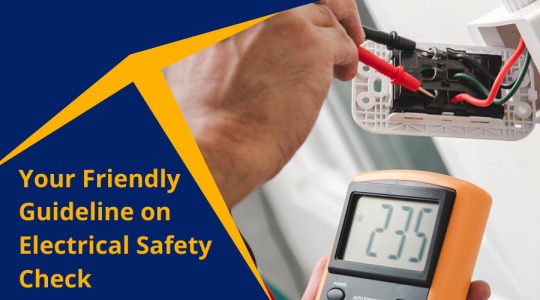
We are sharing some tried and tested guidelines on electrical safety test. and We offer cost effective electrical installation condition report in London, UK. https://bit.ly/34wQi3z
0 notes
Text
What is an EICR, and Why Does Every Landlord Need One?

Do you want to know about EICR test and cerificate, look no further. we are sharing information about EICR through this PPT. https://bit.ly/32vBQYF
0 notes
Text
What is Involved in an EICR Test?
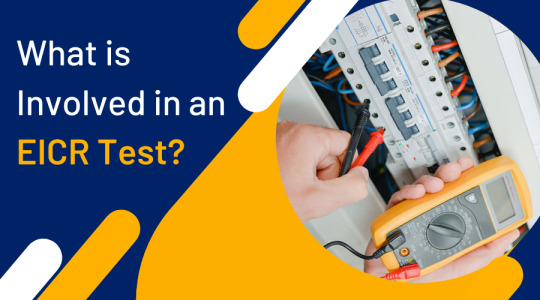
To begin, let us explain what an EICR is and what it does. An EICR (Electrical Inspection Condition Report) is an official document created after a complete examination of electrical installations in any residential, commercial, or industrial property. https://bit.ly/3dS0Riv
0 notes
Text
Understanding the Basics of EICR test in Easy Words

EICR is the shortened form of Electrical Installation Condition Report. It is nothing different but a periodic inspection report on the safety aspect of a property related to its electrical system. https://bit.ly/3F1t1nd
0 notes
Text
Frequently asked questions about EICR certificate
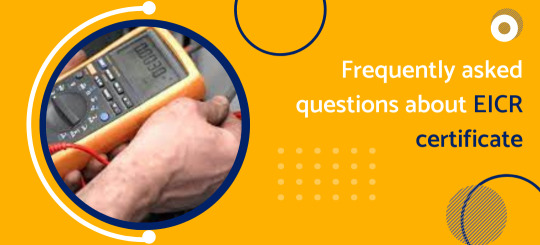
The responsibility of safety for an establishment falls on the shoulders of the landlord. The EICR is a legal certificate concerning electrical safety that validates electrical safety standards and their observation. https://bit.ly/3DZgn75
0 notes
Photo
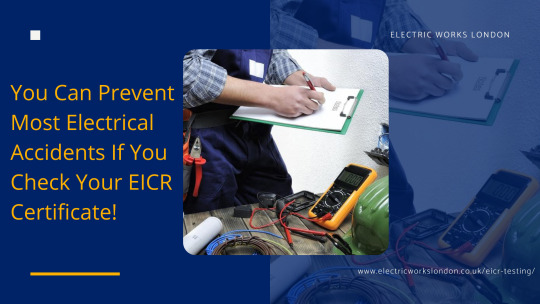
You Can Prevent Most Electrical Accidents If You Check Your EICR Certificate https://bit.ly/317O7S9
0 notes
Photo

What are Your Electrical Obligations as A Landlord or Tenant https://bit.ly/3rdlgXq
0 notes
Photo

Commercial Properties and Landlord Obligations in Electrical Safety https://bit.ly/3nNzwUC
0 notes